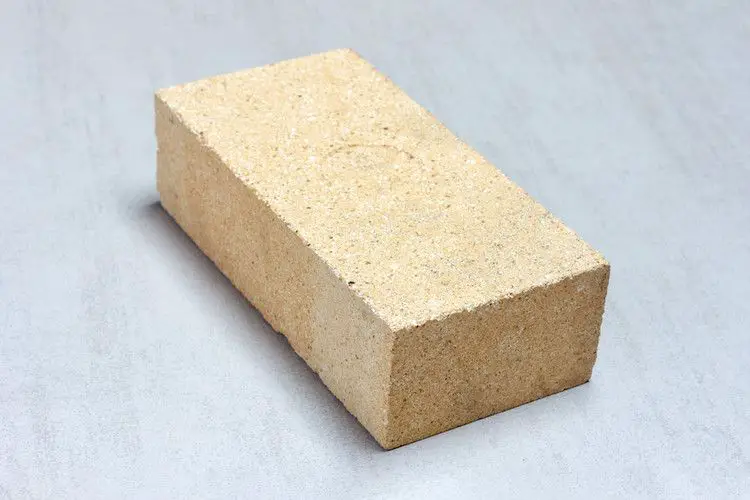What Is The Composition Of Sandy Clay?
Sandy clay is a soil type that contains a mixture of clay particles and sand grains. It has properties of both sand and clay that give it unique characteristics. Sandy clay soils are found across many regions, particularly areas that once contained sandy seas, lakes or rivers which deposited both sand and clay sediments over time.
Sandy clay contains enough clay to provide cohesion, plasticity and malleability, while the sand grains provide stability, improve drainage and reduce shrinking/swelling. The exact composition can vary, but sandy clay typically contains 10-35% clay mixed with 50-90% sand particles along with trace amounts of silt, organic matter and salts.
Due to its accessibility and diversity of properties, sandy clay has become a common “fill” material used in construction and landscaping projects. It can be readily compacted and shaped. Sandy clay is also utilized in making bricks, ceramics, cement and adobe due to its hardened durability, appearance and thermal insulating properties when fired.
Composition of Sandy Clay
Sandy clay is composed of clay minerals, sand particles, and trace elements. The clay minerals commonly found in sandy clay include illite, montmorillonite, kaolinite, and chlorite. These platy clay minerals give sandy clay its plasticity and cohesiveness.
The sand particles in sandy clay are typically quartz, though other mineral grains like feldspar and mica can also be present. The sand grains are much larger than the clay particles and range in size from 0.05 to 2 mm in diameter. The sand provides strength and stability to the sandy clay matrix.
In addition to clay minerals and sand particles, sandy clay contains trace amounts of iron oxides and hydroxides, which give it red, brown and yellow colors. Aluminum oxides and hydroxides are also present. Small amounts of organic matter from decayed plant material may also be found in some sandy clays.
Clay Minerals
Clay minerals are an essential component of sandy clay. They form from thin, flat tetrahedral and octahedral sheets that stack together to create layered structures. The most common clay minerals in sandy clay are:
- Smectite – This group includes montmorillonite, which has a 2:1 sheet structure. Smectite clays have high cation exchange capacity and can absorb significant amounts of water.
- Kaolinite – This is a 1:1 clay consisting of single tetrahedral and octahedral sheets. Kaolinite has low shrink-swell capacity.
- Illite – This is a 2:1 clay with a high percentage of potassium ions between its sheets. Illite has moderate cation exchange capacity.
The specific clay minerals present influence sandy clay’s plasticity, cohesion, shrink-swell potential, and other engineering properties. Understanding the clay mineral composition is key to assessing the behavior and appropriate uses of a sandy clay soil.
Sand Particles
The sand particles in sandy clay consist primarily of quartz. Quartz is a mineral composed of silicon and oxygen that is abundant in most types of sand. In addition to quartz, sandy clay may contain other mineral particles like feldspar, mica, and calcite in smaller quantities.
Quartz particles make up the bulk of the sand fraction in sandy clay. They are formed through igneous and metamorphic geological processes and have a hardness of 7 on the Mohs scale. The quartz crystals can range from transparent to translucent to opaque and come in a variety of colors like white, yellow, pink, purple, and gray.
Feldspar is the next most common mineral present after quartz. Feldspars are a group of aluminum silicate minerals such as orthoclase, plagioclase, and microcline. They are softer than quartz with a hardness of 6 on the Mohs scale and can be white, pink, tan, or gray in color.
Micas are sheet silicate minerals like muscovite and biotite mica. They have a pearly luster and perfect basal cleavage. Micas are also relatively soft with a hardness of 2.5 to 4 on the Mohs scale. Calcite is a calcium carbonate mineral that can sometimes be found in sandy clays as well.
The exact mineral composition of the sand particles depends on the geological origins of the sandy clay. But quartz overwhelmingly dominates while feldspar, mica, calcite, and other minerals make up a much smaller portion of the sand-sized particles present.
Trace Elements
Sandy clay contains small amounts of trace elements that impact its properties. The most notable trace elements are iron, aluminum oxides, and organic matter.
Iron oxide minerals give sandy clay its red or brown colors. These minerals are highly reactive and can influence the soil’s chemical properties. Iron oxides bind to clay particles and help cement them together, increasing the soil’s strength.
Aluminum oxides are also reactive minerals that contribute to the sandy clay’s chemical properties. They tend to make the soil more acidic.
Organic matter refers to decayed plant and animal residues in the soil. While only present in small quantities, organic matter improves sandy clay’s ability to retain nutrients and water. Organic matter also binds particles together and contributes to soil structure.
Physical Properties
Sandy clay has a unique physical texture comprised of both clay minerals and sand particles. This gives it a gritty, sandy feel while still maintaining some plasticity and moldability from the clay component.
The plasticity of sandy clay is moderate, lower than pure clay but higher than sandy soils. The clay minerals allow the sandy clay to deform and mold when wet, while the sand particles reduce the overall plasticity. The exact plasticity depends on the relative proportions of clay and sand.
Sandy clay has a density intermediate between pure clay and pure sand. The density ranges from 1.5-2.0 g/cm3 on average. The clay minerals have a sheet-like structure that can pack together tightly, increasing density. The sand particles are less dense, so a higher sand content will lower the overall density.
The porosity of sandy clay can vary substantially depending on the degree of compaction. Loose, uncompacted sandy clay has a high porosity around 45-55% from the spaces between the clay and sand particles. Under pressure and compaction, these spaces collapse and the porosity reduces to 25-40%. Higher clay content increases porosity before compaction but reduces the loss of porosity when compacted.
Chemical Properties
Two key chemical properties of sandy clay are its cation exchange capacity and pH level.
Cation exchange capacity (CEC) refers to the soil’s ability to hold positively charged nutrients, known as cations. Sandy clay has a lower CEC than pure clay soils, but its CEC is still moderate. Its CEC arises from the clay minerals present, which possess negative charges that attract and retain cations electrostatically. Common cations found in sandy clays include calcium, magnesium, potassium and sodium.
The pH level of sandy clay ranges from slightly acidic to slightly alkaline, generally between 6 and 8. The clay fraction tends to make the pH more alkaline, while the sand fraction tends to make the pH more acidic. The pH affects nutrient availability and the solubility of toxic elements. Managing the pH is important for plant growth and preventing contamination issues.
Engineering Properties
Sandy clay has important engineering properties related to its strength, compressibility, and permeability that impact its use in construction and infrastructure projects.
Strength: The strength of sandy clay depends on the amount and types of clay minerals as well as the quantity and particle sizes of sand grains. Higher clay content typically increases cohesive strength while sand provides internal friction. However, sandy clays are weaker than pure clay soils. The strength must be tested to determine if the soil will support loads without excessive settlement.
Compressibility: Sandy clay is moderately compressible due to the clay fraction, which compacts under pressure. The amount of compression depends on the composition and water content. Dry sandy clay is stiff while saturated soil is more prone to compression. Compressibility is an important factor in settlement and bearing capacity.
Permeability: Sandy clay has low to moderate permeability, as the sand component provides some drainage while the clay restricts flow. Permeability depends on the specific composition and describes how fast water flows through the soil. This influences subsurface drainage, potential for frost action, and seepage rates. Proper permeability values must be used in design.
Locating Sandy Clay
Sandy clay is most commonly found in alluvial environments near rivers, lakes, beaches, and other bodies of water. The sedimentary deposits in these areas contain a mix of clay, silt, sand, and gravel particles that have been transported and deposited over time by flowing water.
To locate sandy clay deposits, look for low-lying, flat areas adjacent to rivers and lakes, as well as shorelines and tidal flats. The repeated wetting and drying cycles in these environments help create the characteristic composition of sandy clay.
When examining soil in the field, sandy clay can be identified by its gritty, rough texture, yet still being moldable and cohesive when wet. The sand grains can be seen and felt within the clayey matrix. Sandy clay may exhibit bedding structures from ancient flood plains. The color can range from grey to brown to reddish orange depending on the mineral content.
Simple field tests can help confirm a sandy clay classification. Roll a moist sample between your fingers – it will form into a flexible ribbon shape rather than crumbling apart. Shake a dry sample in your palm – you may hear and feel the sand grains within the clay mixture. Sandy clay will not be as sticky and plastic as pure clay, nor will it be as loose and non-cohesive as clean sand.
Uses of Sandy Clay
Sandy clay has several important uses, particularly in construction projects, pottery and ceramics, and waste containment:
Construction Projects: The engineering properties of sandy clay make it well-suited for construction projects. It can be used to make bricks and cement. When mixed with concrete, sandy clay improves its strength and durability. Sandy clay is also used as a foundation and fill material at construction sites.
Pottery and Ceramics: The plasticity of sandy clay enables it to be shaped into pots, vases, tiles, and other ceramic items. When fired at high temperatures, the sandy clay hardens into a durable material. The sand particles provide strength, while the clay gives formability and hardness when fired.
Waste Containment: Sandy clay can be used to line landfills and hazardous waste sites. Its low permeability provides containment, preventing contaminants from leaching into surrounding soils and groundwater. At the same time, sandy clay is stable and sturdy enough to support the weight of waste over many years.




